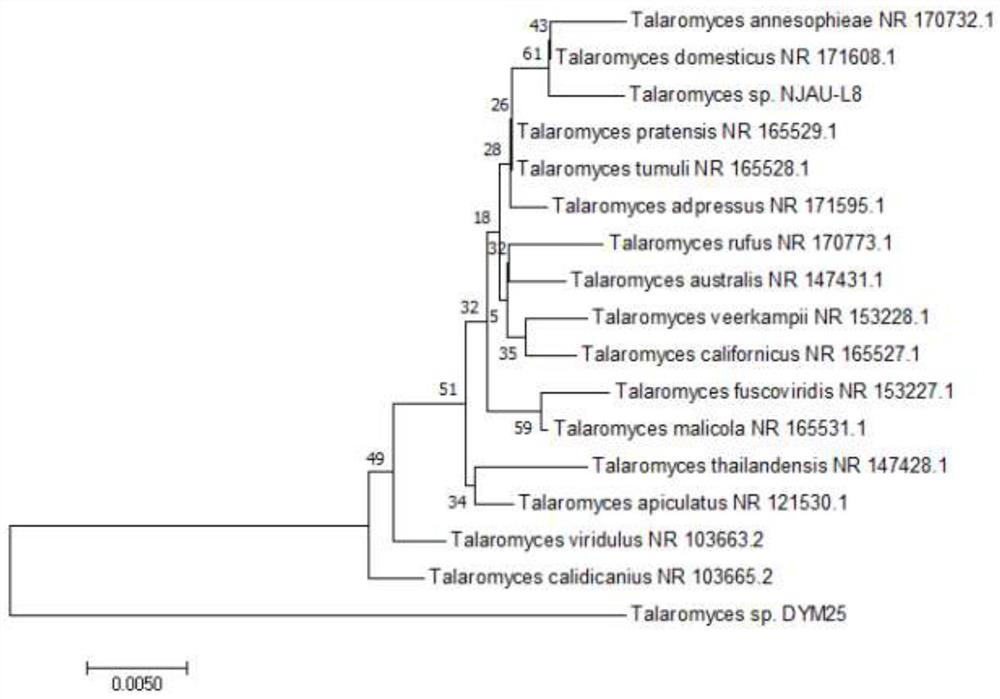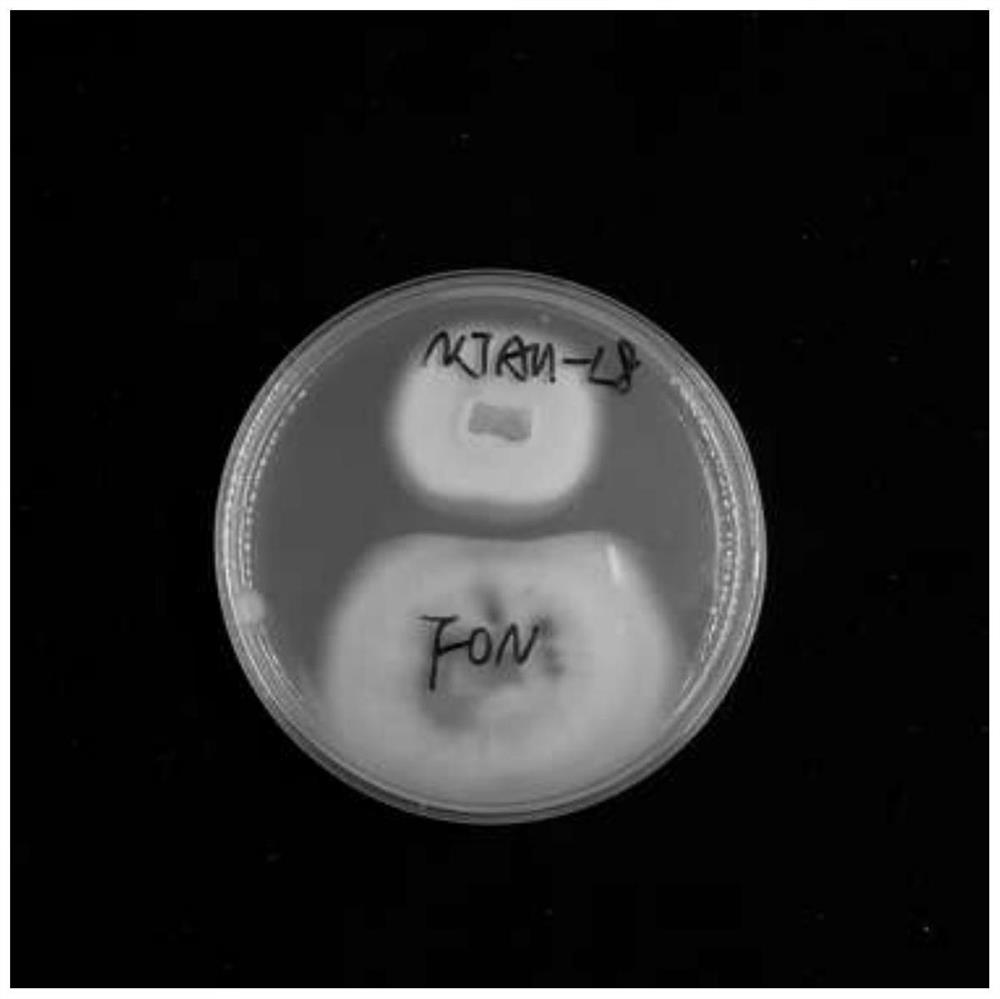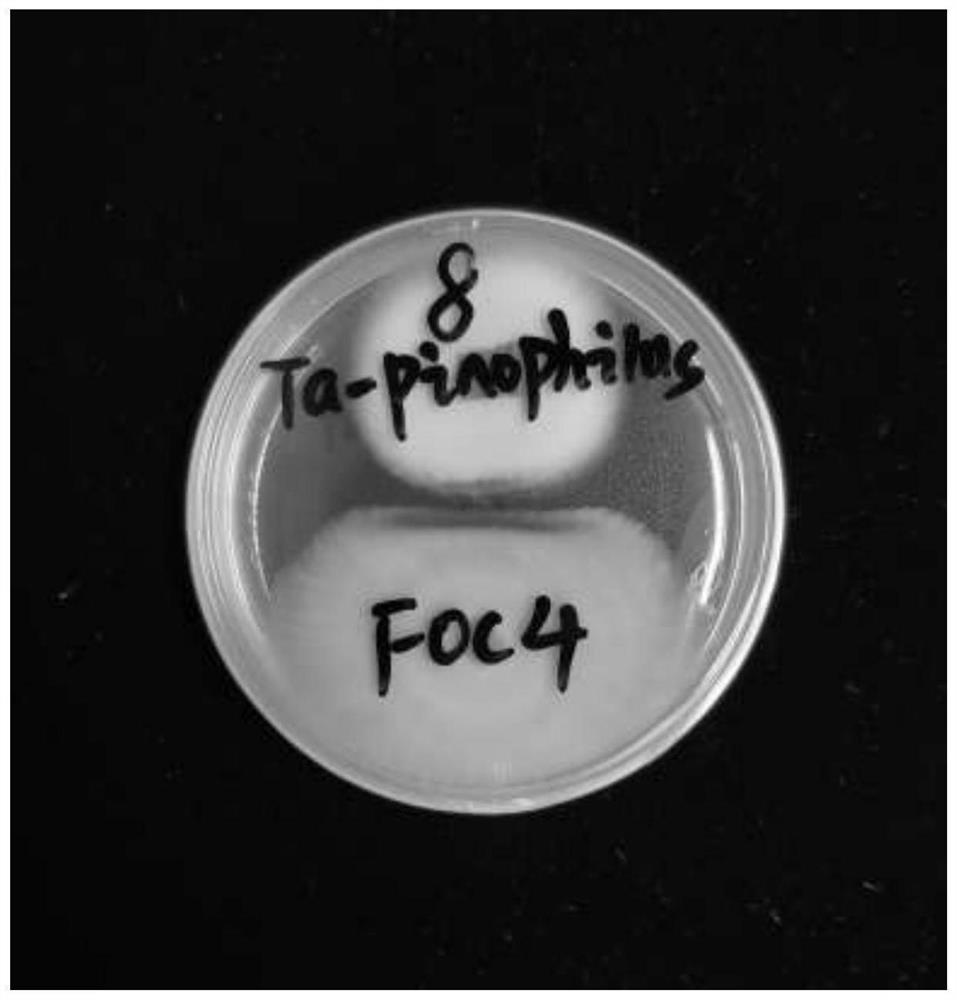Talaromyces pinophilus NJAU-L8 for preventing and controlling continuous crop rotation soil-borne wilt disease and use thereof
A technology of NJAU-L8, banana wilt, which is applied in the direction of chemicals, applications, fungi, etc. for biological control, and can solve problems such as high economic costs and promotion obstacles
- Summary
- Abstract
- Description
- Claims
- Application Information
AI Technical Summary
Problems solved by technology
Method used
Image
Examples
Embodiment 1
[0028] Example 1 Isolation and screening of inhibiting Fusarium oxysporum fungi
[0029] Test procedure
[0030] 1. Test materials:
[0031] Pathogen tested: Fusarium oxysporum f.sp.cubense tropical race 4 (Foc4), the pathogen of banana wilt Key laboratories are separated and preserved.
[0032] Soil for test: Soil of high diseased banana orchard in Jianfeng Town, Ledong County, Hainan.
[0033] Test medium: PDA medium (g / L): 200.0g potato, 20.0g glucose, 18.0g agar, natural pH; NA medium (g / L): 5.0g NaCl, 3.0g beef extract, 10.0g peptone , pH 7.0-7.2.
[0034] Main reagents and equipment: Premix Taq (TaKaRa Taq Version 2.0) kit, fungal genomic DNA small purification kit, gene amplification instrument, vertical shaking incubator, UV-Vis spectrophotometer.
[0035] 2. Isolation of strains:
[0036] After processing the collected pineapple rhizosphere soil samples, weigh 10g of soil samples, add 1L of sterile water to mix, shake at 180r / min for 30 minutes, keep the temp
Embodiment 2
[0041] Identification of embodiment 2 functional bacteria NJAU-L8
[0042]Strain NJAU-L8 was cultured on PDA medium for 96 hours. The colony grows fast, the hyphae are sparse at the edge, dense in the middle, the colony is yellow-white, the mycelium is loose and densely fluffy, the spores are light yellow, the edges are irregular, opaque, and they are closely connected with the medium and are not easy to be picked; ITS The results of the comparison analysis of the developmental tree constructed by the sequence showed that the strain NJAU-L8 had the highest homology with Talaromyces pinophilus, and the farthest homology with Talaromyces sp. Strain NJAU-L8 was identified as Talaromyces sp. ( figure 1 ). The strain is harmless to crops and non-pathogenic to humans and animals.
Embodiment 3
[0043] Embodiment 3 Functional bacterium NJAU-L8 and the plate antagonism of watermelon wilt pathogen
[0044] The strain NJAU-L8 and the watermelon wilt pathogen were inoculated into PDA medium at the same time, and cultured in a constant temperature incubator at 28°C for 4 days. After the two strains grew well, compared with the PDA plate inoculated with only pathogenic bacteria under the same conditions, it was observed that the strain could significantly inhibit the growth of Fusarium oxysporum watermelon-specific Fon on the PDA medium. The results showed that the functional bacterium NJAU-L8 had an inhibitory effect on the pathogenic bacteria of Fusarium wilt of watermelon ( figure 2 ).
PUM
 Login to view more
Login to view more Abstract
Description
Claims
Application Information
 Login to view more
Login to view more - R&D Engineer
- R&D Manager
- IP Professional
- Industry Leading Data Capabilities
- Powerful AI technology
- Patent DNA Extraction
Browse by: Latest US Patents, China's latest patents, Technical Efficacy Thesaurus, Application Domain, Technology Topic.
© 2024 PatSnap. All rights reserved.Legal|Privacy policy|Modern Slavery Act Transparency Statement|Sitemap



